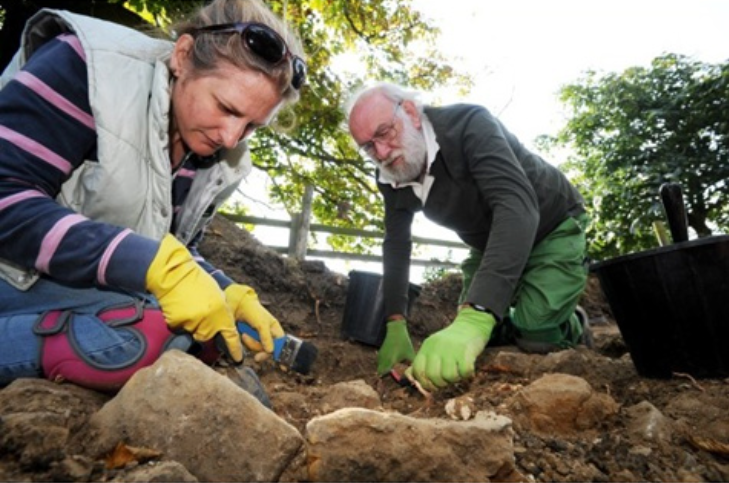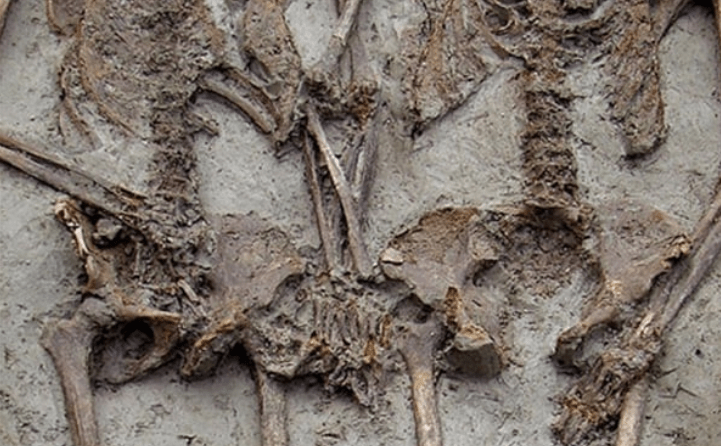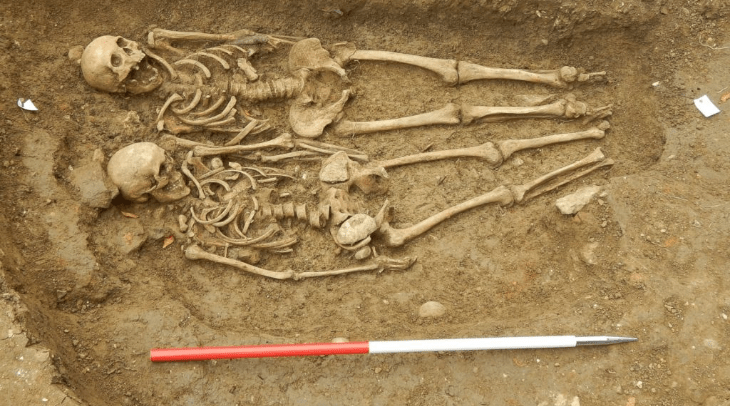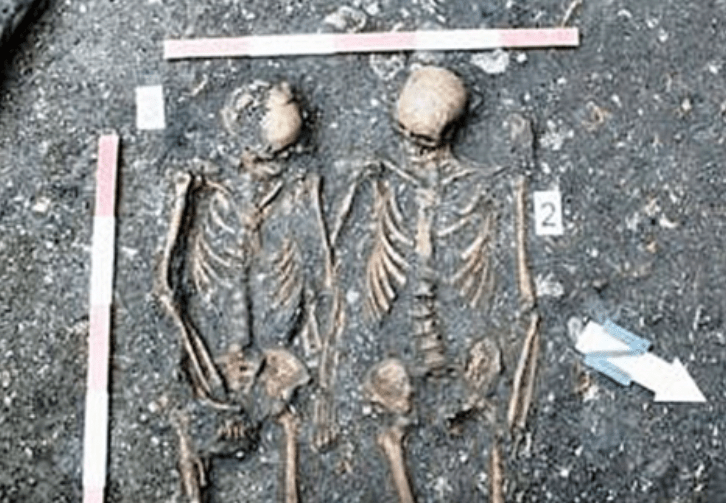Archaeologists have discovered two skeletons holding hands at an ancient site of pilgrimage, in the newly-discovered Chapel of St Morrell in Leicestershire England. According to a news release in the Leicester Mercury, the remains are that of a man and a woman of a similar age, although researchers are not sure of their identity.
The medieval Chapel of St Morrell was only recently rediscovered after it had become long lost to the pages of history. However, local historian John Morrison, was able to track down its location through researching old historical records, and geophysicists were then called in to take images of the land to locate the exact spot to begin digging. Excavations at the site have now been ongoing for the last four years.

Volunteers Lotty Wallace and Ken Wallace work on a small section of the excavation. Credit: Leicester Mercury
Old records refer to the chapel as being dedicated to Saint Morrell, the 4th Bishop of Anjou, France, who lived in the 5 th century AD. The earliest mention of the chapel was in a will of 1532, and in 1622, a writer notes that multitudes travelled to the chapel to be healed. However, archaeological remains at the site go back as early as the Roman period, some 2,000 years ago.
“This ground has been used as a special sort of place by people for at least 2,000 years,” said archaeologist Vicky Score, of the University of Leicester, who is leading the project.

Along with the two skeletons holding hands, researchers also found seven other sets of remains dating back to the 14 th century AD, each ‘held down’ by a large stone placed on top of their bodies. “This was a tradition popular in eastern Europe with the idea of keeping the dead down,” said Score.

It is not the first time that archaeologists have unearthed couples holding hands in death. In 2011, archaeologists found the skeletal remains of a Roman-era couple holding hands in a tomb located in Modena, Italy; in 2012, dozens of tombs uncovered in Siberia contained the skeletal remains of couples in loving embrace; and in 2013, researchers discovered the remains of a medieval couple holding hands in a former Dominican monastery in Cluj-Napoca, Romania.
“Whoever buried these people likely felt that communicating their relationship was just as important in death as it was in life,” said Kristina Killgrove, a biological anthropologist at the University of North Carolina, who was involved in the Modena finding.

The skeletal remains of a young couple found in a former Dominican monastery in Cluj-Napoca, Romania. Image source.
The discovery of skeletons holding hands has often perplexed researchers, who have questioned how they came to die at around the same time. While the first assumption usually made is that one died and then the other committed suicide, this is unlikely because suicide was regarded as a sin in the Medieval Ages, so anyone who killed themselves would not have been buried in a holy place.
Such findings shine a light on the humanity behind ancient discoveries and lead us to wonder about who they were, how they died, and what their lives may have been like. Archaeologist Donato Labate, the director of the excavation in Modena, Italy, said that the discovery evokes an uplifting tenderness. “I have been involved in many digs, but I’ve never felt so moved.”